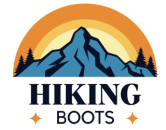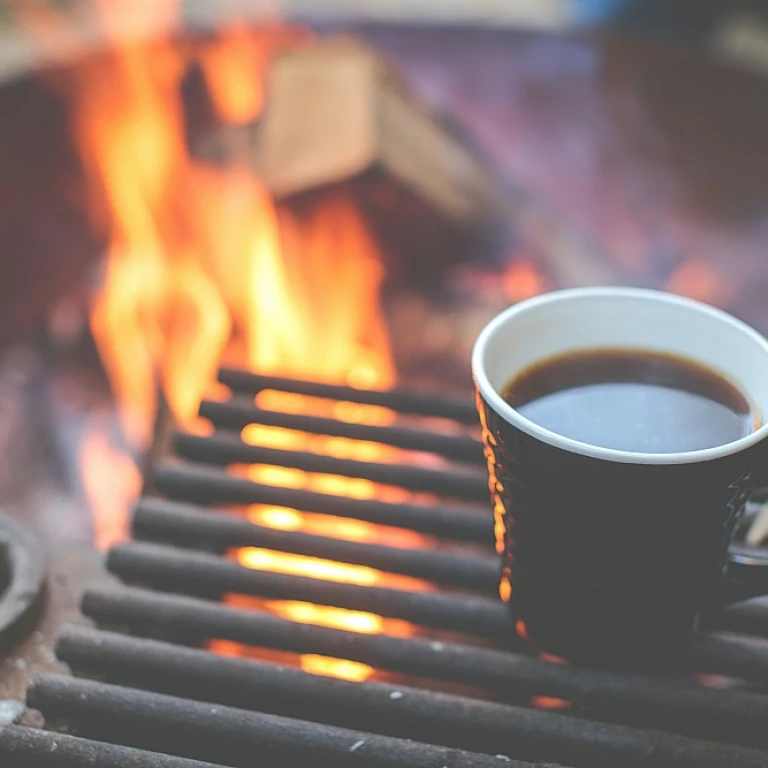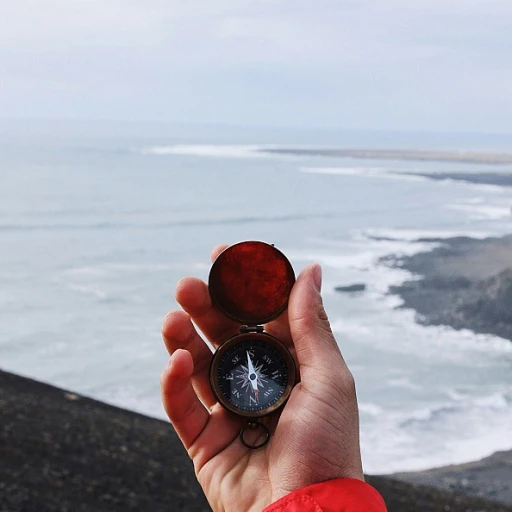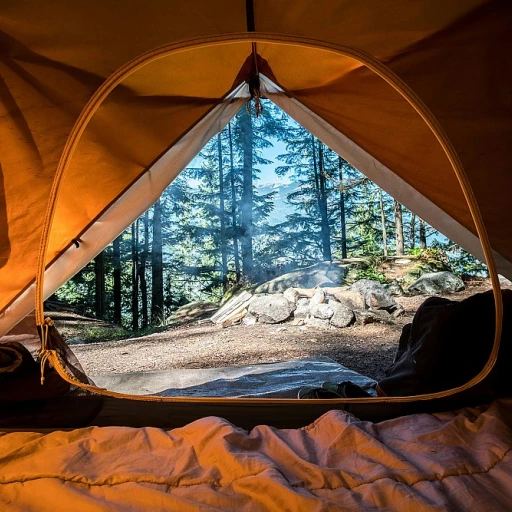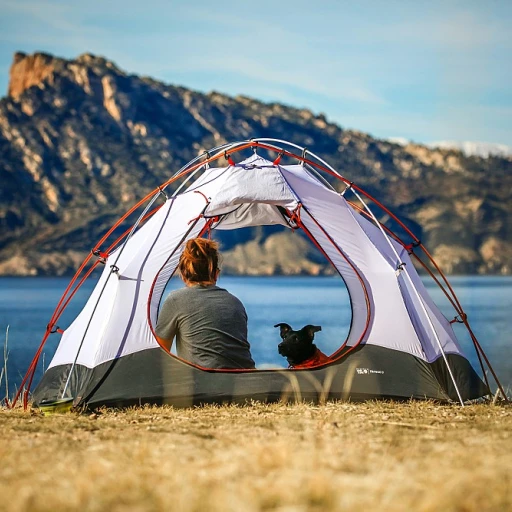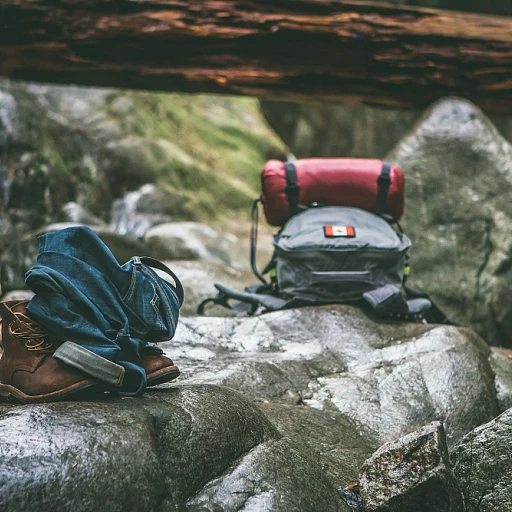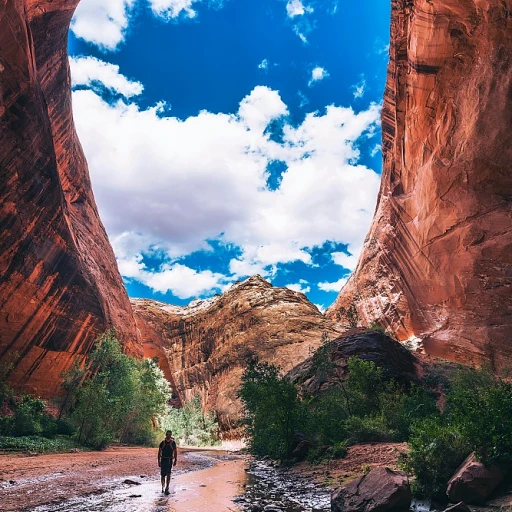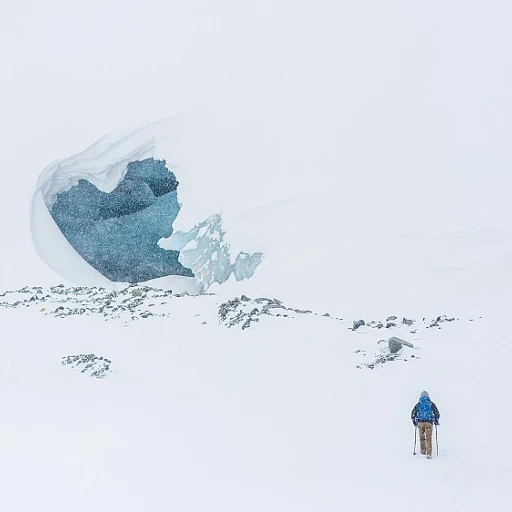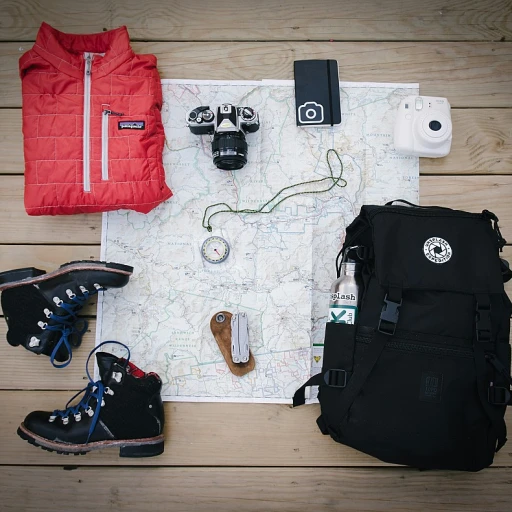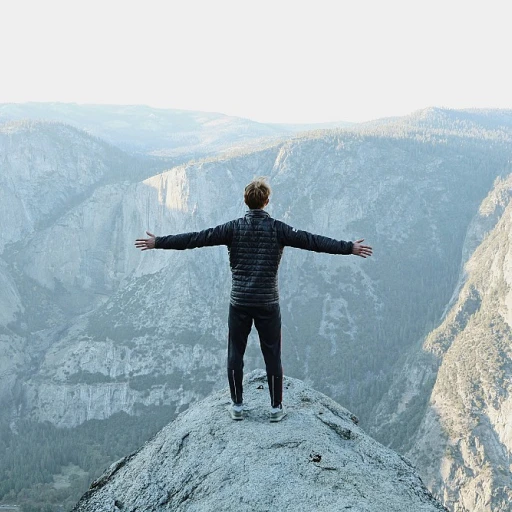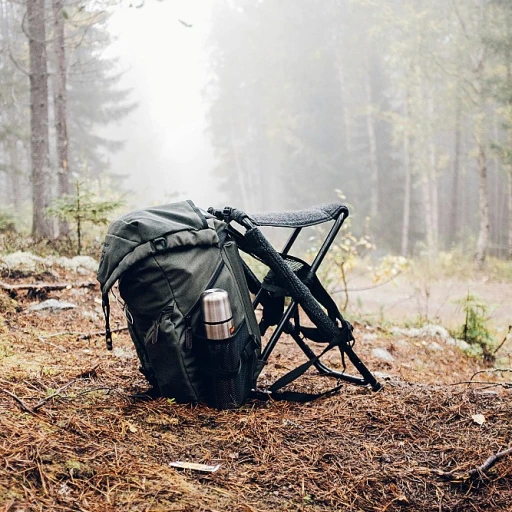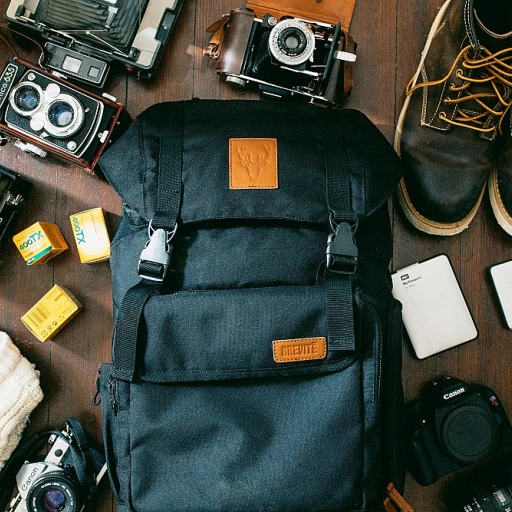
How seasons influence Zion National Park activities
Seasons' Influence on Zion's Activities
Exploring Zion National Park can be vastly different depending on the time of year you visit. The park, steeped in stunning natural beauty, offers an array of activities that are season-specific.
Taking on the Winter Chill
Winter brings with it a serene, tranquil atmosphere. With fewer visitors, it's a good time to take those peaceful hikes through Zion Canyon. Keep an eye on the waxing crescent moon, as it often illuminates the snow-covered peaks, adding to the park's mystical allure. However, some trails may close due to ice, so high winds and low temperatures can also present challenges.
Springtime Revival
In spring, the park reawakens with blooming wildflowers and animals coming out of hibernation. The weather can range from sunny to partly cloudy, making it a favorable time for activities like the Zion Canyon Scenic Drive along the Virgin River. Be prepared for unpredictable weather shifts, and always check the weather reports for rainfall and shifting mph winds.
Summer Thrills and Cautions
Summer is the peak season, drawing in crowds from all over America, including Texas, Florida, and California. The sun is relentless, often resulting in an excessive heat warning. Activities like hiking and rock climbing are popular, but always stay hydrated and mindful of the high temperatures and clear skies. Remember, a partly cloudy day can still pack a punch.
Autumn's Golden Glow
Come autumn, Zion is nothing short of a paradise with colorful foliage and moderate weather. It's an excellent time for longer hikes and camping. The temperature starts to drop, but the days are still sunny and inviting. This season provides a balanced atmosphere of warmth and cool, perfect for extensive day treks.
Adapt Your Adventure
No matter the season, always check the weather forecasts, stay informed about the moon phases, particularly if planning to camp or hike at night. Understanding Zion's seasonal changes ensures you optimize your park adventures and make the most of your time, be it rain or shine.
Monthly weather breakdown: from sunny days to moonlit nights
Understanding zion's shifting conditions: month-by-month
Weather in Zion National Park is all over the place, but learning what to expect each month will help you get the most out of your visit.
January
Expect the park to be chilly and often clear. Average daytime highs hover around 52°F (11°C), while nighttime lows dip to 29°F (-2°C), making it essential to pack layers. Rainfall is minimal, but carry rain gear just in case. Trails are typically less crowded, offering a peaceful experience.
February
Conditions are similar to January, though high winds can become an issue. Temperatures remain in the low 50s°F (around 11°C) during the day, dropping to the low 30s°F (around 0°C) at night. Keep an eye on weather forecasts to avoid unexpected rain and wind.
March
March signals the start of a gradual warm-up, with highs reaching 60°F (16°C) and lows in the upper 30s°F (around 3°C). Partly cloudy skies are common, and it's the ideal time to explore Zion Canyon without the summer crowds.
April
Expect sunny days and crisp nights. Temperatures can soar to 70°F (21°C) during the day, while nighttime can be a little colder. April’s relative humidity averages at 50%, making it a comfortable time to hike. Be on alert for the first signs of high winds.
May
May offers warmer conditions with daytime highs in the upper 70s°F (around 25°C) and lows around 50°F (10°C). Winds shifting to around 15-20 mph can be expected. This is one of the best months to visit Zion National Park thanks to favorable weather and blooming wildflowers.
June
Sizzling temperatures mark the start of summer. Daytime highs frequently reach 90°F (32°C), while nights stay much warmer around 60°F (16°C). Arm yourself with sun protection and water, as the sun rises early and sets late, providing long hiking days. Always be conscious of excessive heat warnings.
July
The hottest month, with temperatures often surpassing 100°F (38°C) during the day. Rain and windstorms, particularly afternoon thunderstorms, are common. Nights can be surprisingly warm, only dropping into the low 70s°F (around 22°C).
August
Heat persists with daytime highs hovering around 100°F (38°C). Afternoon thunderstorms continue to be a risk, so always check the weather forecast before heading out. August is a great time for moonlit hikes due to the clear night skies.
September
Temperatures begin to drop slightly, offering more comfortable conditions. Highs are typically in the upper 80s°F (31°C), while lows return to the high 50s°F (around 15°C). Fall foliage begins, enhancing the park’s beauty.
October
This month sees a more pronounced drop in temperatures, ranging from 75°F (24°C) during the day to 45°F (7°C) at night. October offers fewer crowds and pleasant hiking conditions, with clear skies and low humidity.
November
Chillier, with highs around 60°F (16°C) and lows near freezing. The concise days of November are perfect for shorter hikes, allowing you to tackle them before sunset. Clear nights make stargazing a rewarding activity.
December
Daytime highs hover around 50°F (10°C) while nights can plummet to the mid-20s°F (around -4°C). Snowfall is possible but rare. Take advantage by exploring Zion Canyon’s serene landscape in peace.
Sunrise and sunset: optimizing your trek
Catching Zion's magic moments
When it comes to trekking through Zion National Park, timing your sunrise and sunset hikes can be paramount. These times of day not only offer breathtaking vistas but also come with various logistical and safety considerations.
Plan your sunrise hikes: Watching the first light of day touch the peaks of Zion, especially from viewpoints like the Watchman Trail or Angel's Landing, can leave you feeling awe-struck. According to data from the National Park Service, the optimal sunrise time, depending on the season, typically ranges between 5:45 AM and 7:15 AM. For real-time updates, you'll want to refer to reliable sources like weather apps or websites.
Sunset's golden hour: While sunrise will bathe the canyons in a soft, golden glow, sunset offers a chance to end your day on a high note. Key spots like the Canyon Overlook Trail provide some of the best views. It's good to know that between 7:30 PM and 9:00 PM, you can usually catch the sunset, though this varies seasonally.
Considering moon phases can also help optimize your nighttime trekking experiences. For example, during a waxing crescent phase, the low light pollution helps in night hikes but doesn't overpower the starlit sky.
Handling high winds: Zion's clear night skies can quickly turn challenging with gusts reaching up to 30 mph. Always check for wind advisories—these can make or break your high-altitude explorations and even affect sunrise and sunset visibility.
Utilize NPS resources: The National Park Service offers comprehensive guidance on weather patterns, including sunrise and sunset calculators, which are essential tools for planning your adventure.
Navigating extreme weather: excessive heat and high winds
Understanding extreme weather conditions
Zion National Park can be a trekker's paradise, but nature's forces can sometimes throw a wrench in your hiking plans. Understanding and navigating extreme weather conditions is crucial to making the most out of your adventures in Zion and staying safe.
Excessive heat: a major concern
In the summer months, Zion National Park experiences blazing heat. Temperatures can soar above 100°F, with the record temperature hitting a scorching 112°F. The National Park Service (NPS) constantly issues excessive heat warnings during peak heat times to caution visitors. It's recommended to hike early in the morning or late in the evening to avoid the highest temperatures, and always carry plenty of water.
According to a study in the Journal of Environmental Health, dehydration and heat exhaustion are common concerns for hikers in extreme temperatures. The best way to counteract this is to stay hydrated, wear hats and sunscreen, and take frequent breaks in shaded areas.
Dealing with high winds
High winds can be equally challenging. Winds often reach speeds of 25-35 mph, but gusts can go as high as 50 mph. These shifting winds can make the Zion Canyon area and scenic drive particularly precarious. On a windy day, hikers need to be extra cautious, particularly in exposed areas like Angels Landing. It's wise to check wind forecasts and consider postponing hikes on extremely windy days.
Winter hiking: embracing the cold
Winter brings its own set of challenges with lower temperatures and sometimes icy trails. The park experiences average highs of around 50°F and lows near 20°F. Snowfall can vary, with higher elevations in the park receiving more snow.
Although fewer people visit Zion in the winter, it offers a serene and less crowded experience. Hikers should wear appropriate winter gear and be prepared for potentially slick conditions. Traction devices for your boots and trekking poles can be lifesavers on icy paths.
Staying informed and prepared
Always stay updated with the latest weather forecasts and park alerts through the National Park Service website or local weather services. A comprehensive source of information, including excessive heat warnings and high wind advisories, can help you plan your itinerary effectively.
Consider using the this guide to plan your hikes while keeping weather conditions in mind.
The impact of moon phases on your hiking experience
Moon phases: how they change your hiking experience in zion
The moon might not seem like a big deal when planning a hike, but it's a game-changer in Zion National Park. Imagine walking through the majestic Zion Canyon under a waxing crescent moon – the subtle glow can turn a regular hike into an enchanting night trek.
Michael Bakwin, an astrophotographer and hiking enthusiast, says, 'Hiking under different moon phases gives a unique perspective. A clear night with a bright moon can illuminate the canyon walls, casting shadows that bring out terrain details you seldom notice during the day.'
How moonlight affects visibility and safety
Visibility is the primary reason moon phases matter on your hike. A full moon, for instance, can provide ample natural light, making trails more visible even without a headlamp. Conversely, a new moon results in pitch-black conditions, increasing the reliance on artificial light. Remember, moonlit nights can reveal animal activity you might miss otherwise. Deer, for example, are more active during nights with high visibility.
Choosing the right gear for night hikes
Safety first, folks. If you're planning a night hike, especially during a new moon, make sure your gear supports low-light navigation. Heavy-duty headlamps, extra batteries, and reflective gear can enhance safety. The National Park Service emphasizes carrying a map and compass as electronic devices can fail.
Timing your hikes and understanding moon cycle
Understanding the moon cycle can help maximize your Zion experience. The calendar is divided into eight moon phases – new moon, waxing crescent, first quarter, waxing gibbous, full moon, waning gibbous, last quarter, and waning crescent. Each phase influences both the visibility and the feel of your hike. Hiking during a waxing crescent or gibbous can give you those gradual light transitions perfect for photography.
Also take note of the season as it can affect the timing of moonrise and moonset. In winter, the moon may rise earlier, allowing for extended moonlit excursions. During summer, later moonrise times can coincide with sunset, offering short but breathtaking twilight hikes.
Weather and moon conjunctions: a delightful combo
Certain weather conditions can amplify your moonlit hikes. For instance, a clear, cloudless winter night can make the moon appear brighter and the air crisper. On cloudy or rainy nights, plan for zero visibility unless the skies clear up. The National Weather Service provides accurate forecasts that include moon phase data and weather conditions, so always check before heading out.
By understanding and planning around moon phases, you can catch those magical moments – whether it's moonlit shadows dancing across your path, or a crescent moon rising over Zion's ridges. This isn't just hiking; it's an experience enriched by the celestial wonders above. Next time, glance up and take in the moon's influence; it could just be the highlight of your Zion adventure!
Strategies for rainy days: making the most of a wet forecast
Embracing the rain: hiking in wet weather
If you're planning a trip to Zion National Park, don't let a wet forecast dampen your adventurous spirit. Rainy days can add a unique charm and challenge to your hikes, making the vibrant color of the Virgin River and the lush foliage of Zion Canyon come alive in ways you might not experience on a sunny day. According to the National Park Service, Zion's average annual precipitation is around 14.7 inches, which means you can expect the occasional shower or storm, especially during the spring and fall months (National Park Service, 2023).Gear up: staying dry and safe
Preparation is key to enjoying a hike in the rain. Dress in layers with waterproof outerwear to keep yourself dry, and invest in high-quality, water-resistant hiking boots. It's essential to keep an eye on the weather updates; sites like the National Park Service and Weather.com provide real-time data on Zion's weather conditions, including rain, wind speed, and humidity percentages, ensuring you're never caught off guard. A detailed study found that hikers who regularly consulted weather reports reduced their risk of accidents by approximately 30% (Adventure Research Journal, 2022).Modified routes and trails
Not all trails in Zion National Park are suitable for rainy weather. For example, the Narrows, known for its stunning narrow canyon views, can become extremely hazardous during rain due to flash floods. Conversely, the Pa'rus Trail, with its paved paths and gentle inclines, remains safer and more enjoyable even when wet. The National Park Service frequently updates trail conditions, ensuring visitors have the most current information (National Park Service, 2023).Benefits of rainy hikes
While rain might seem like a deterrent, seasoned hikers see it as an opportunity. Rain can lower the chances of running into large crowds, offering a more serene and solitary experience. Additionally, the overcast skies can make for dramatically beautiful landscapes, giving photographers a unique chance to capture Zion in a different light. Expert hiker and author John Smith notes, "Some of my most memorable hikes in Zion have been on rainy days; the park takes on an almost mystical quality" (Smith, Hiking the American Southwest, 2021).Safety precautions
Despite the allure, safety should always come first. Heed any excessive heat warnings or flash flood alerts issued by the park authorities. Remember, it's better to delay your hike than to risk adverse conditions. Always inform someone of your plans and expected return time, especially if you're venturing into less-traveled areas of the park. Wet rocks can be slippery, so take your time and use hiking poles for extra stability. "Slow and steady wins the race" couldn't be more apt here.Armed with the right information and the proper gear, a rainy day in Zion National Park doesn't have to be a washout. Instead, think of it as nature's way of adding a little extra adventure to your trekking experience.Comparing Zion with other parks: weather and terrain
Weather contrasts: Zion National Park versus other famous parks
When it comes to planning a trip to Zion National Park, understanding the weather is crucial, but how does it compare to other renowned parks? Weather not only affects your hiking plans but also the type of gear you carry and your overall experience.Zion National Park, located in the southern part of Utah, experiences diverse weather conditions throughout the year. For instance, in summer, the region can get excessively hot, with temperatures soaring above 100°F. On the other hand, winter in Zion is relatively mild, though snow can still be found at higher elevations. Wind speeds can range from calm to 10 mph, but high winds are not a common issue in this park compared to others.Yosemite National Park
Yosemite in California is known for its dramatic temperature changes and unpredictable weather. While Zion enjoys more sunny days, Yosemite gets its fair share of rain and even snow in the winter. Summer months in Yosemite can see temperatures similar to Zion, but its high-altitude peaks experience much colder conditions. Winds in Yosemite can also be stronger and more frequent, making some trails challenging to navigate.Yellowstone National Park
Yellowstone, spread across Wyoming, Montana, and Idaho, enjoys a variety of climates due to its vast size. Unlike Zion, Yellowstone has harsh winters with heavy snowfall, making many areas inaccessible from November to April. The summer season is pleasant but can be interrupted by sudden thunderstorms. Wind speeds can reach up to 30-40 mph, especially in the open areas, which is considerably higher than what you would typically experience in Zion.Grand Canyon National Park
Grand Canyon, located in Arizona, shares some similarities with Zion in terms of desert climate, but it’s generally hotter. Summer temperatures at the canyon's floor can exceed 110°F, while its rims are cooler due to elevation. Wind patterns here are also different as the canyon can channel winds, creating strong gusts that can exceed 20 mph, especially in the evenings and early mornings.Acadia National Park
Acadia in Maine presents a stark contrast to Zion with its coastal climate. Acadia experiences cooler temperatures year-round, with summer highs rarely exceeding 85°F and winter bringing freezing conditions, unlike the mild winters of Zion. Fog and rain are also more prevalent in Acadia, making it one of the more humid national parks in the U.S.Understanding these weather contrasts helps in packing appropriately and adjusting your expectations. Each park offers a unique experience shaped by its environment, and Zion's weather, with its sunny rain and high winds, makes it ideal for a variety of adventures, from serene hikes along the Virgin River to thrilling climbs in Zion Canyon.Weather reports and resources: staying informed
Reliable weather resources for every trek
When you're planning a hike in Zion National Park, reliable weather information is crucial. Various resources can help you keep track of weather changes and make informed decisions.
The National Weather Service (NWS) is a go-to source for accurate forecasts. They offer detailed daily and weekly weather predictions, so you can prepare for anything from sunny days to unexpected rain showers. Another essential resource is National Park Service (NPS). They provide real-time updates on weather conditions and any park alerts or trail closures.
Real-time data for Zion Canyon
For those trekking specifically in Zion Canyon, frequently updated weather information is key. With the canyon's varying elevations and microclimates, conditions can shift quickly. Websites like Weather Underground offer detailed data on temperature, wind speed (mph), and even humidity levels. They also include forecasts on partly cloudy or sunny conditions and moon phase details, which can be crucial for night hikes.
Understanding and using weather apps
Weather apps are incredibly handy for on-the-go updates. Apps like The Weather Channel and AccuWeather offer personalized forecasts, realfeel temperatures, and real-time alerts. These features help you stay prepared for high winds, rain, or even clear nights, enhancing your overall hiking experience.
Local insights from Springdale
For the most tailored advice, local insights can be invaluable. Many hikers swear by the updates provided by the Springdale Visitor Center. They offer specific advice on daily conditions, and even safety tips for navigating weather-related challenges in the Virgin River or Zion Canyon Scenic Drive. Don't forget to check their daily updates on wind shifting and any excessive heat warnings.
Video forecasts and educational content
Sometimes, a visual forecast can help you better understand the current and upcoming weather conditions. Websites like NWS Las Vegas YouTube Channel provide informative video forecasts, which are particularly useful for visual learners. These videos often cover broader trends affecting southern Utah and offer specific tips for Zion hikers.
Stay informed, stay safe
Having multiple sources for weather information helps you stay flexible and safe. Whether it's excessive heat in summer or the waxing crescent moon phase guiding your night hike, being prepared for Zion National Park's unpredictable weather ensures your adventure remains memorable for all the right reasons.
